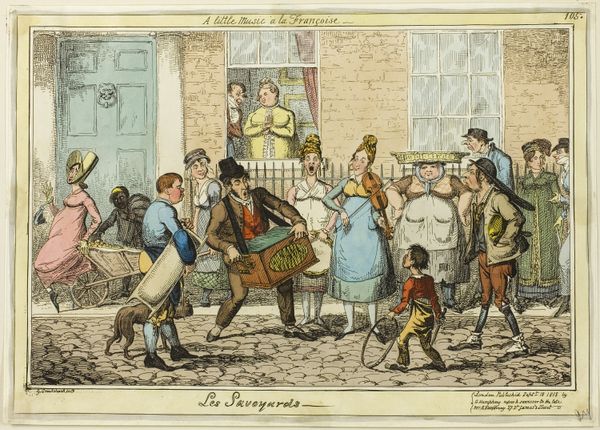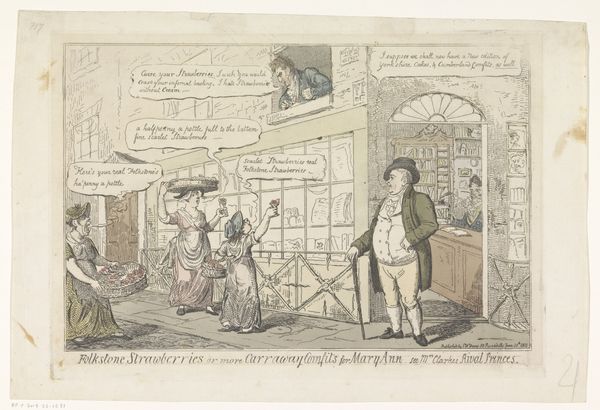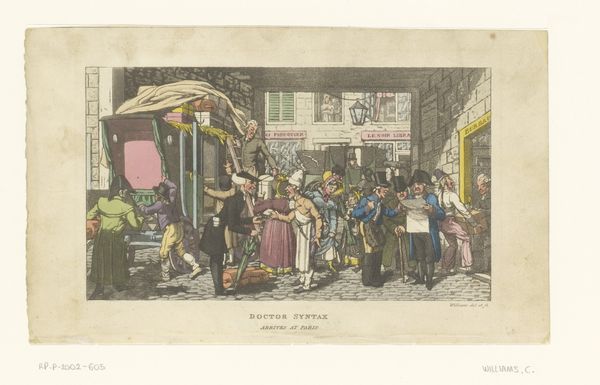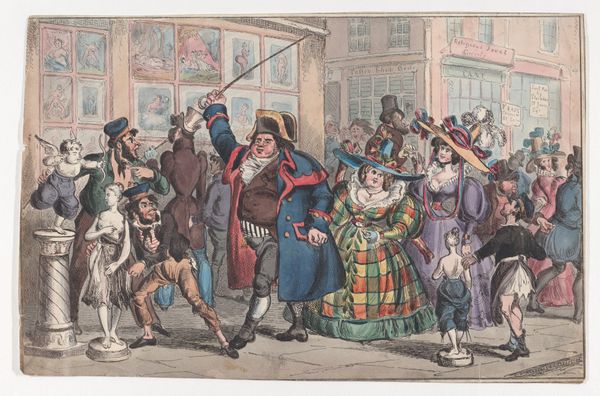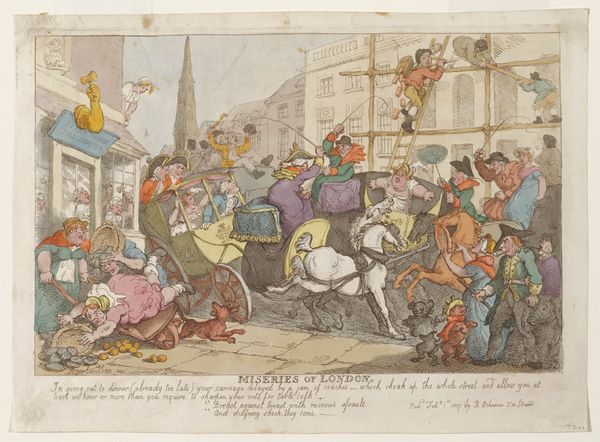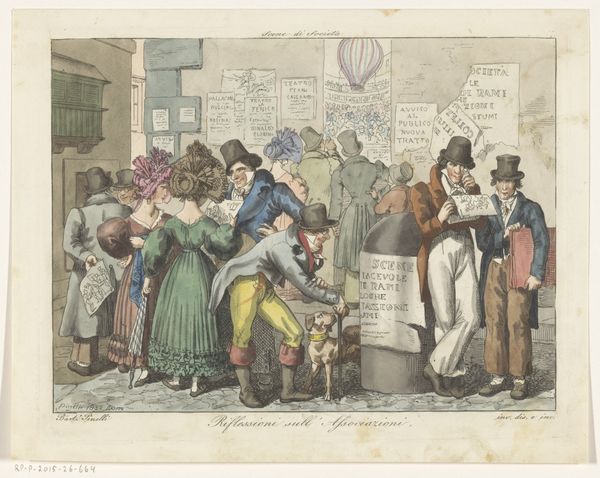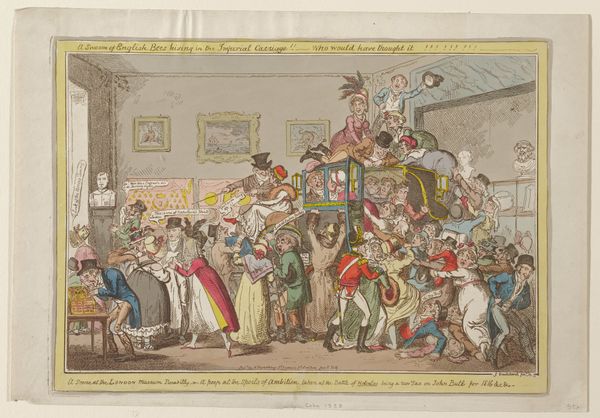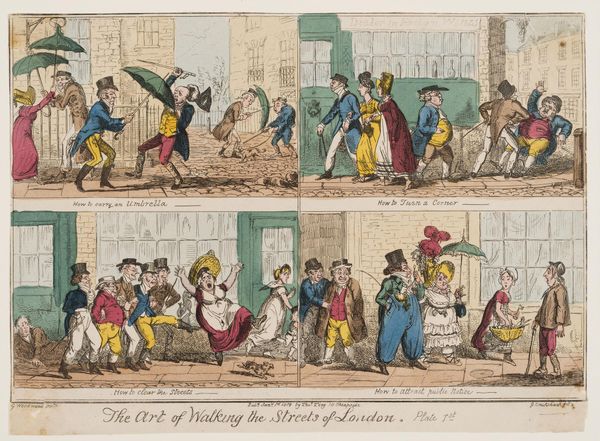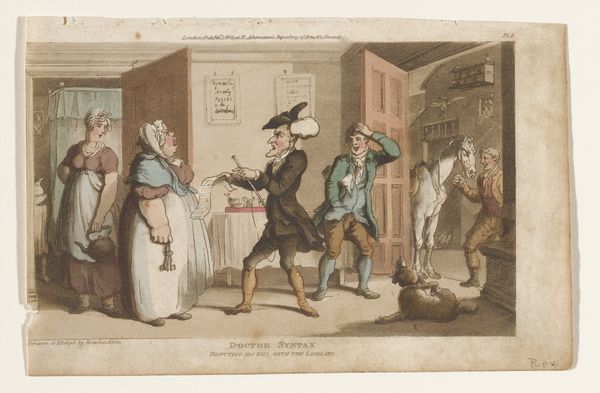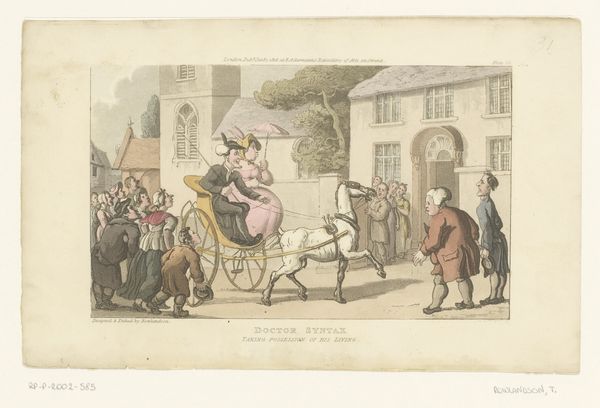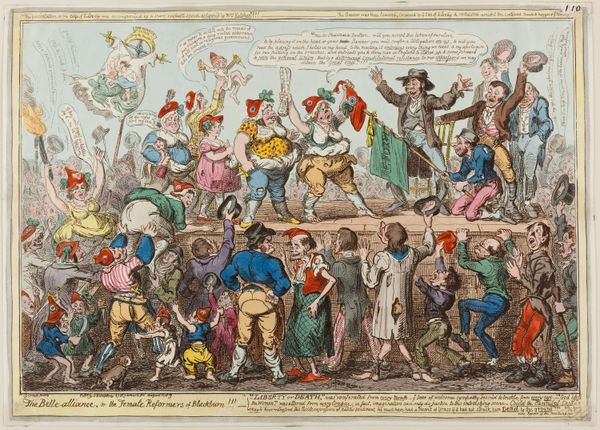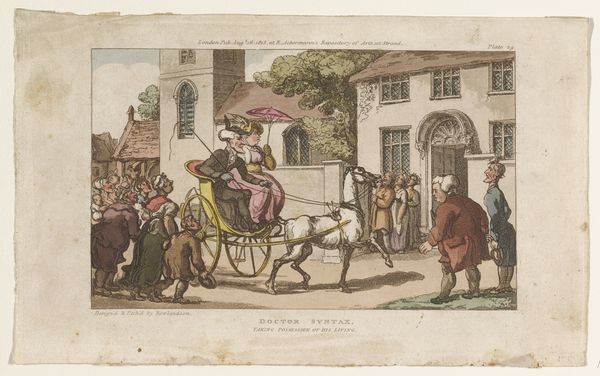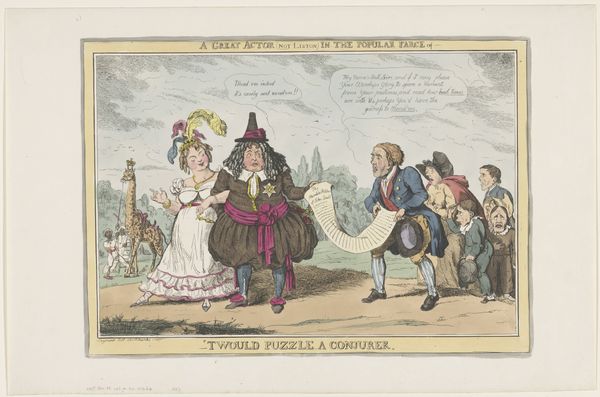
drawing, print, etching, paper
#
drawing
# print
#
etching
#
caricature
#
paper
#
romanticism
#
genre-painting
Dimensions: 245 × 345 mm (image); 255 × 351 mm (plate); 258 × 357 mm (sheet)
Copyright: Public Domain
Curator: Oh, the bustle! Just look at this colorful commotion. My first impression is just… chaos, wonderfully captured. Editor: Absolutely! This etching with hand-coloring by George Cruikshank, titled "Traveling in France" from around 1818, perfectly encapsulates that sense of slightly farcical travel of the era. The Art Institute of Chicago holds it. Curator: "Farcical" is spot on! Each figure is such a caricature, a distillation of types. I'm particularly drawn to the oversized heads—the coach guard in the back with his comically oversized facial features, it feels so exaggerated! But is there something political brewing beneath the surface? Editor: Very much so. Cruikshank was a master satirist. This print, created after the Napoleonic Wars, plays on British perceptions of the French. Notice the exaggerated fashion, the perceived social awkwardness...it's all commentary on post-war Anglo-French relations, the kind that resonated with the British public opinion at that time. Think of it as a visual punchline about the French. Curator: I see! So it's more than just humorous observation; it’s pointed social critique. Does the medium influence this commentary? The fact that it is etching and print rather than an oil. Editor: Significantly. Prints were easily disseminated and far more affordable than paintings. This accessibility allowed Cruikshank to reach a broad audience and shape public sentiment with immediate effect. The etching, the hand-coloring is quite meticulous; each stroke, each splash of color intensifies the satire, amplifies the comicality of the scene for all to partake. Curator: That changes things, doesn’t it? Knowing this was designed for mass consumption. There’s almost a shared understanding, a kind of wink-and-nod at the audience that makes it even funnier. I feel the emotional power lies not just in its formal properties, but in its socio-political punch. Editor: Precisely. What strikes me most, perhaps, is the clever fusion of artistry and political commentary, rendered in such an accessible way that it makes us question historical biases, especially our own prejudices around national identity, which persists in our modern society, through simple accessible humorous forms of art such as this etching and print by Cruikshank. Curator: Absolutely. Thank you, it's been a pleasure unpacking not just what we are looking at, but the “why.” Editor: My pleasure too. It really sheds light on the social dynamics during that period.
Comments
No comments
Be the first to comment and join the conversation on the ultimate creative platform.
